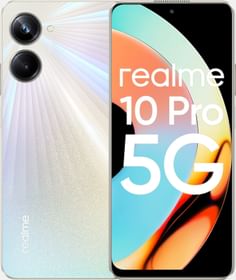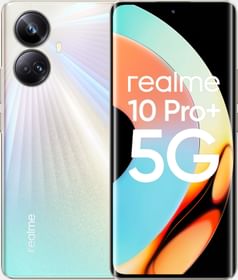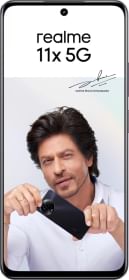Dolby needs no introduction as it is one of the leaders in the audio-video technology market. Today, when you see most smartphones, televisions and big content producers talk you will hear most of them utter two words Dolby Vision and Dolby Atmos. What is this Dolby Vision? Well, this article will explain Dolby Vision and the jargon associated with it.
What is Dolby Vision?
Dolby Vision is a high-dynamic range (HDR) video technology developed by Dolby Laboratories. It is designed to improve the visual quality of video content by increasing the contrast, color accuracy, and brightness of the image. Dolby Vision uses a 12-bit color depth and a wide color gamut to capture and display a greater range of colors and shades, providing a more lifelike and vibrant viewing experience. Dolby Vision is supported by a growing number of TVs, streaming devices, and Blu-ray players, and is often used in conjunction with other audio technologies, such as Dolby Atmos, to provide a more immersive and lifelike entertainment experience.


How does Dolby Vision work?
Usually, when content is created, visual information related to content is usually saved in Metadata. Most HDR and non-HDR videos come with static metadata. This means the entire movie is set at one brightness level when HDR uses ‘static’ information, which means it doesn’t change even if one scene is in a dimly lit cellar and the next is on a brightly lighted street.

Dolby Vision, on the other hand, adapts ‘dynamic’ metadata. By using “dynamic” metadata, Dolby advances technology, content creators may now adjust the brightness not just for each scene but also for each individual frame thanks to this. The picture on your TV is constantly adjusted by Dolby Vision using this dynamic metadata to give you the finest possible image, even taking into consideration the specific capabilities of your TV.


What is Dolby Vision IQ?
Dolby Vision IQ is a feature of some TVs and video displays that automatically adjusts the picture settings of a Dolby Vision-encoded video based on the ambient lighting conditions of the viewing environment. Dolby Vision IQ uses an ambient light sensor to measure the light levels in the room, and adjusts the brightness, contrast, and color of the video accordingly. This allows the video to be displayed with the optimal visual quality for the given lighting conditions, providing a more lifelike and consistent viewing experience.
Dolby Vision IQ is available on some TVs and video displays from manufacturers such as LG, Sony, TCL, Panasonic, and Philips. To use Dolby Vision IQ, you will need a TV or display that supports the feature, as well as a source of Dolby Vision-encoded content, such as a Blu-ray player or streaming device. Consult the user manual of your TV or display for specific instructions on how to enable and use Dolby Vision IQ.
Advantages of Dolby Vision IQ?
The main advantage of Dolby Vision IQ is that it provides a more lifelike and consistent viewing experience for Dolby Vision-encoded content. By automatically adjusting the picture settings of a video based on the ambient lighting conditions of the viewing environment, Dolby Vision IQ allows the video to be displayed with the optimal visual quality for the given lighting conditions. This can improve the contrast, color accuracy, and overall visual quality of the video, providing a more immersive and engaging viewing experience.
In addition, Dolby Vision IQ can also help to reduce power consumption and minimize display-related issues, such as blooming or haloing, by automatically adjusting the brightness and contrast of the video. This can improve the overall performance and reliability of the TV or display, and may help to extend its lifespan.
Overall, the main advantage of Dolby Vision IQ is that it provides a more lifelike and consistent viewing experience for Dolby Vision-encoded content, while also helping to improve the performance and reliability of the TV or display.

What is Dolby Vision APL?
Dolby Vision APL, or Average Picture Level, is a measure of the average brightness of an image or video in a Dolby Vision-encoded stream. The APL is calculated by dividing the sum of the luminance values of all the pixels in the image by the total number of pixels in the image. The APL is an important factor in determining the overall visual quality of a Dolby Vision-encoded video, as it affects the contrast and dynamic range of the image.
In general, a higher APL indicates that the image has a greater range of brightness levels, which can provide a more lifelike and vibrant viewing experience. However, a higher APL can also result in increased power consumption and potentially cause problems with display contrast and color accuracy. As a result, the appropriate APL for a given video will depend on the specific display and viewing conditions and may need to be adjusted to achieve optimal visual quality.

Dolby Vision vs HDR10+: Which one is better?
Dolby Vision and HDR10+ are both high dynamic range (HDR) video technologies that are designed to improve the visual quality of video content by increasing the contrast, color accuracy, and brightness of the image. However, they have some key differences in terms of their capabilities and applications.
Dolby Vision is a proprietary technology developed by Dolby Laboratories. It uses a 12-bit color depth and a wide color gamut to capture and display a greater range of colors and shades, providing a more lifelike and vibrant viewing experience.

HDR10+, on the other hand, is an open-source technology developed by a consortium of companies, including Samsung, Panasonic, and 20th Century Fox. It uses a 10-bit color depth and a wide color gamut to capture and display a wider range of colors and shades, providing a more lifelike and vibrant viewing experience.
Overall, the main difference between Dolby Vision and HDR10+ is in the way they are implemented and the specific devices that support them. Both technologies are designed to provide a more lifelike and vibrant viewing experience, but Dolby Vision and HDR10+ are proprietary and open-source technologies, respectively, developed and supported by different companies. As a result, the availability and compatibility of Dolby Vision and HDR10+ may vary depending on the specific TVs, streaming devices, and Blu-ray players that you are using.
I want to see Dolby Vision, but how?
You’ll need a Dolby Vision-certified HDR-capable TV that is HDR-ready. The majority of the major TV manufacturers, including LG, TCL Sony, Philips, and Panasonic, support it. Samsung is yet to come on board as they are not willing to pay a heavy licensing fee to Dolby.

Dolby Vision is now supported by many 4K Blu-ray players, the latest Microsoft X-box gaming consoles, and the majority of high-end streaming devices, including Apple TV 4K, Chromecast with Google TV, and Amazon Fire TV Stick 4K. If you have a Dolby Vision-certified TV, and Dolby Vision content to play to can watch and enjoy it from your couch. Dolby Vision content is available in various Blu-ray titles, and online streaming services like Netflix, Apple TV+, Disney+ Hotstar, Amazon Prime Videos, VOOT, and more.
Does Dolby Vision work on mobile phones and Laptops?
Yes, Dolby Vision is supported by various smartphones including flagships from Apple and Xiaomi. LG G6 was the first phone to support Dolby Vision and since then numerous phones with Dolby Vision made it to market. As far as laptops are concerned, yes there is a number of laptops with Dolby Vision support available in India. From Apple’s Macbook lineup to Lenovo’s Legion and Yoga books support Dolby Vision. Asus’s latest line-up of laptops including Rog Flow Z13 2022, ROG Zephyrus Duo 16 (2022), and more also supports Dolby Vision.






























